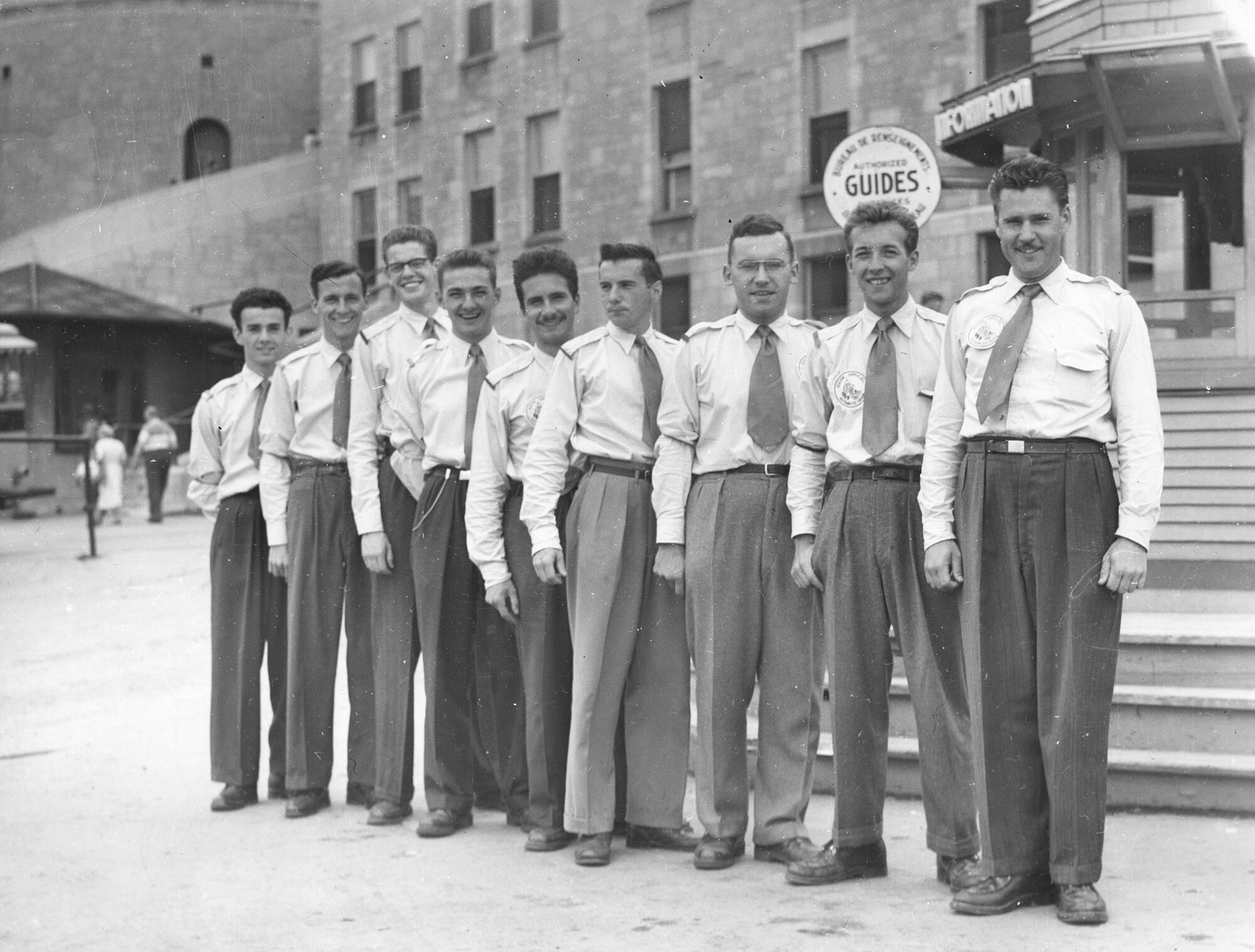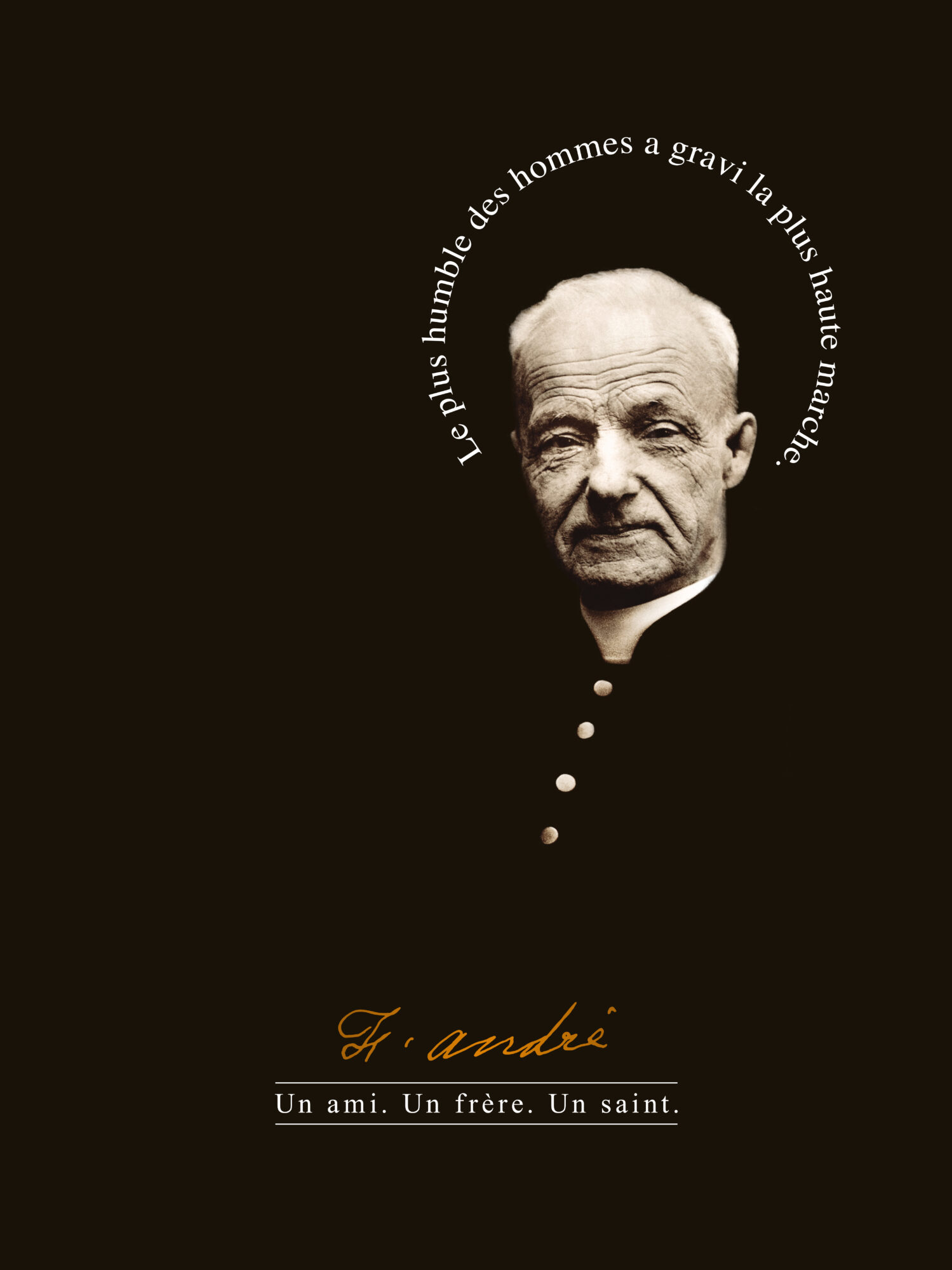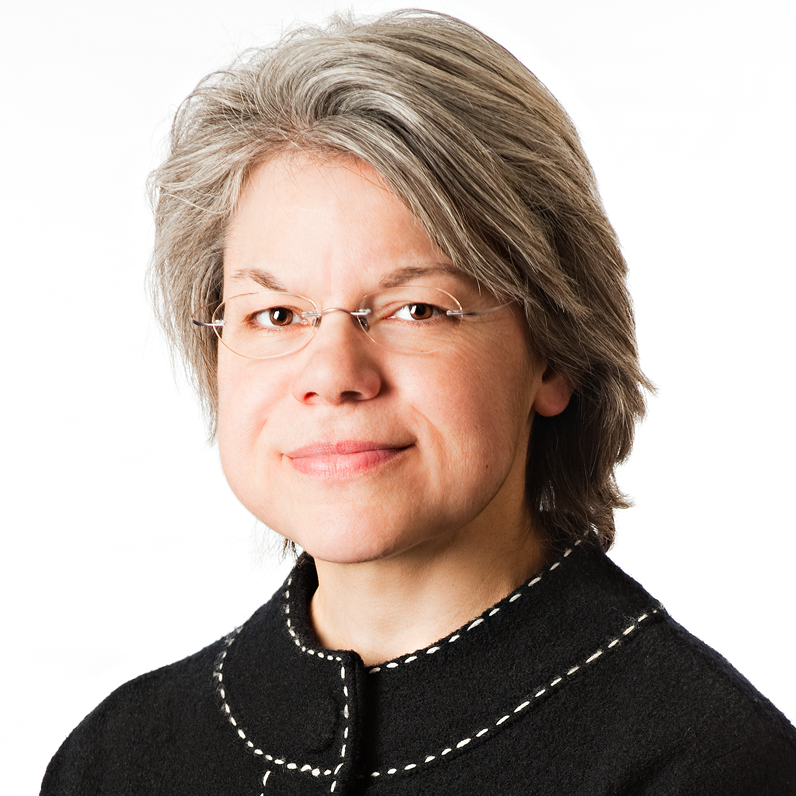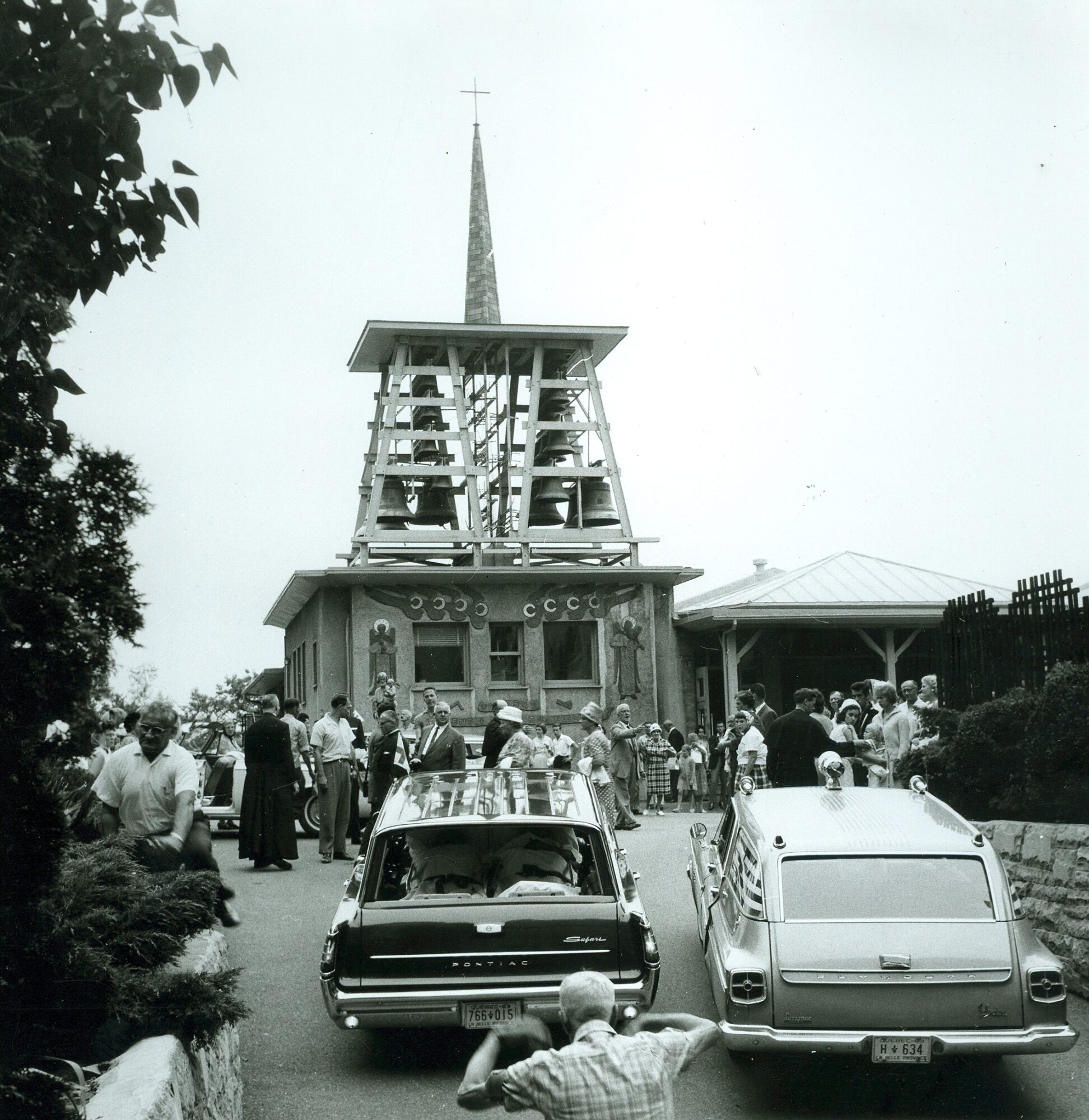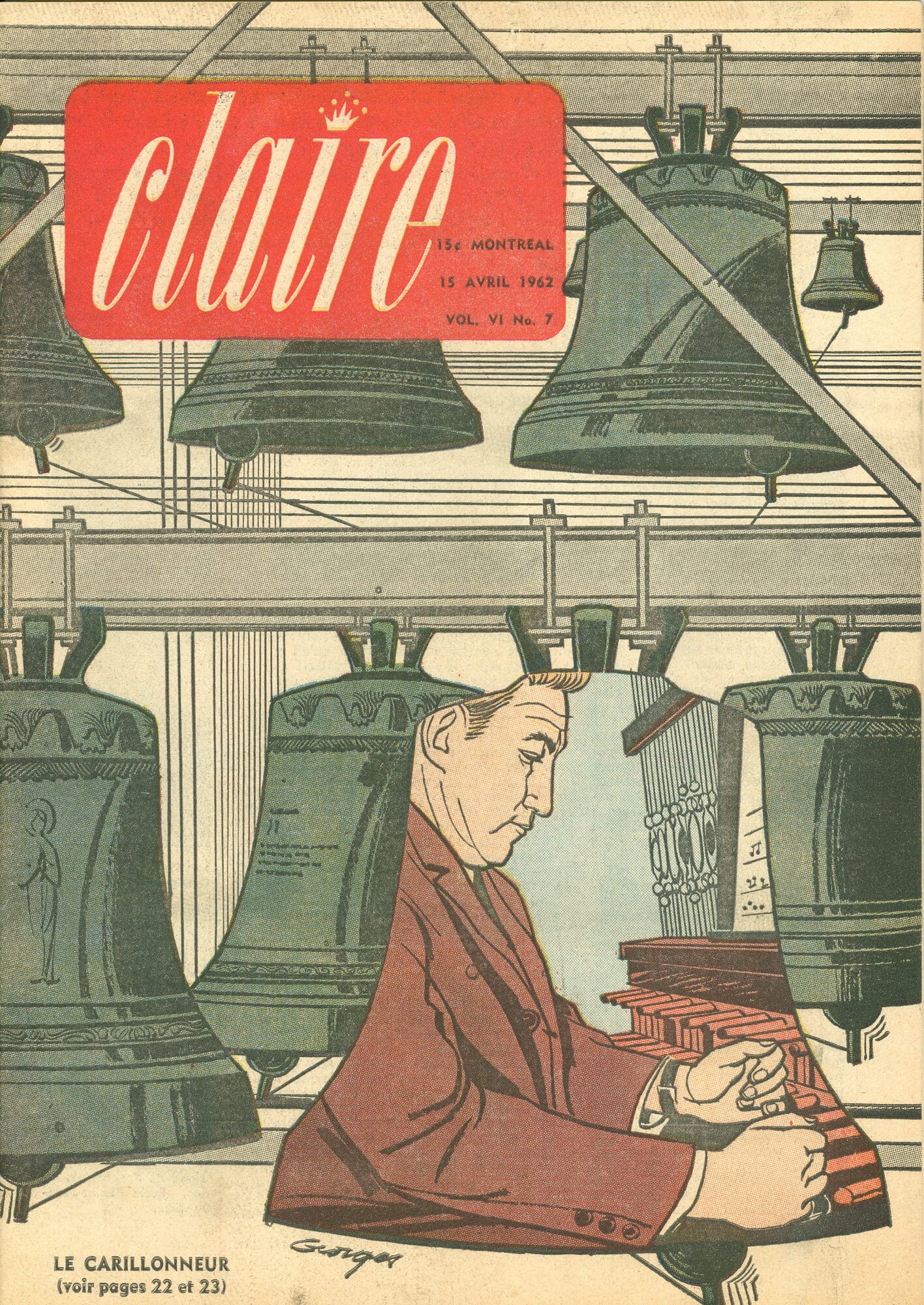Well accompanied at the Oratory!
A popular place
Since its founding in 1904, the shrine has always attracted visitors. People came for prayer and devotion, but also to enjoy the green spaces, the view of the Laurentians, or the peacefulness of the place. With the construction of the Crypt Church, followed by the Basilica and the Garden of the Way of the Cross, larger crowds wished to reach the summit. And since not everyone liked the stairs, tour buses gradually began to appear.
By the mid-20th century, the increasingly visible presence of these large vehicles was beginning to pose a problem. Was the heavy tourist traffic compatible with the spiritual mission of the Oratory? The answer was ambiguous, but there was no doubt that in order to be welcoming to both pilgrims and tourists, the Oratory needed to be organized.
Ironically, this influx of tourists to the Oratory was also the result of the success of its own advertising campaigns. In 1946, the shrine’s council agreed to pay $25 to the Provincial Publishing Agency of Montreal to advertise the shrine in their publications aimed at tourists. A few months later, $100 was allocated to promoting the site in the 1947 edition of the Travel and Listing guide. So it is no surprise that around the same time, officials were already discussing the creation of guide positions to assist visitors during periods of high traffic.
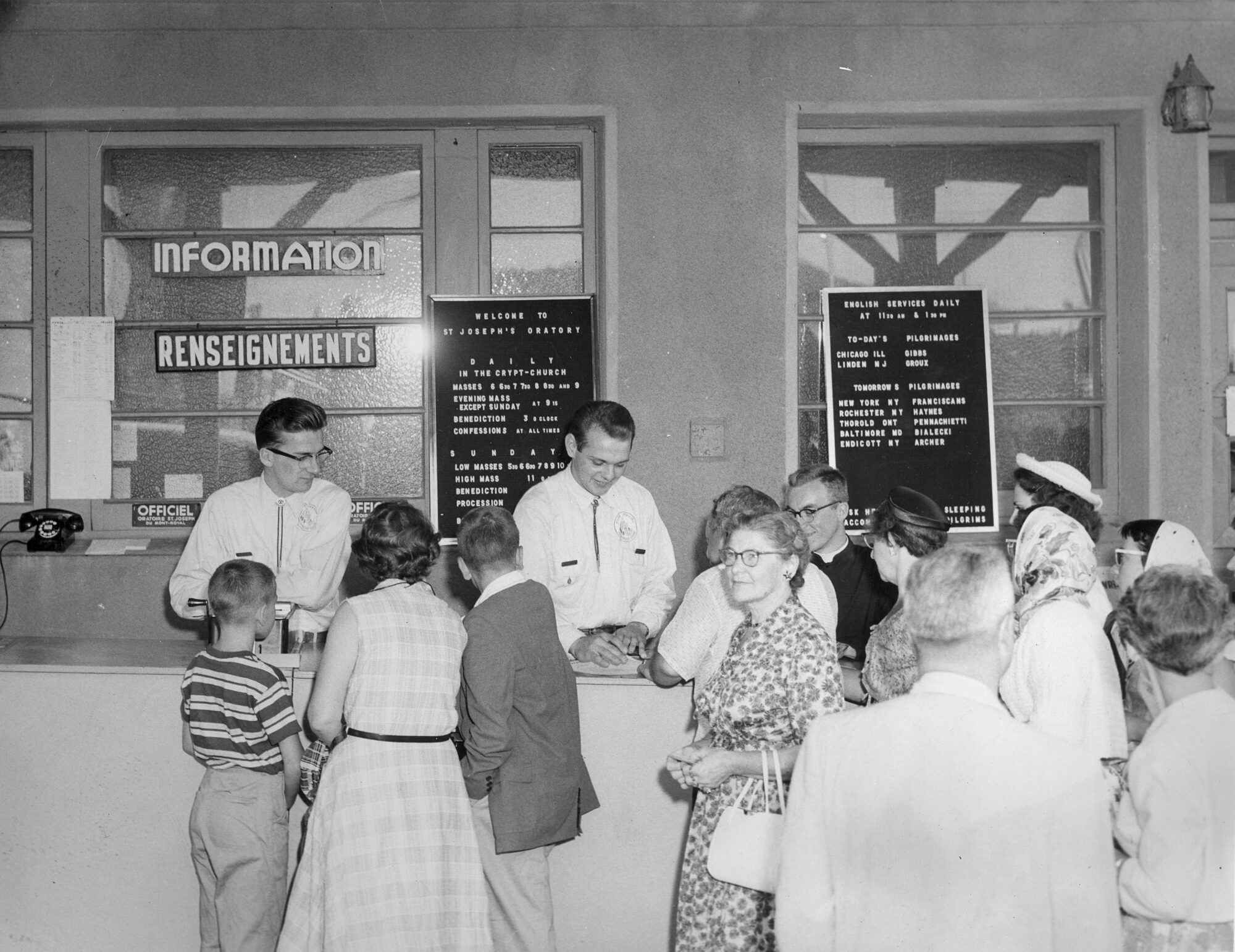
The guides’ information counter. Two boards display the Mass schedule and the expected groups. Around 1950. Photographer unknown. OSJ Archives.
The Forerunners
As early as 1940, the Oratory’s council proposed hiring guides, mainly to meet the growing needs of summer visitors. The council members agreed to offer a salary of $3 per day, along with a purple beret and a badge; however, meals would not be included, and the dark-colored uniform would be at the guide’s own expense (1).
There remains some mystery surrounding this first group of guides, as the archives unfortunately contain no concrete records of their activities. Only one letter, dated 1948 and addressed to the sanctuary’s bursar, suggests that these guides were indeed employed at the Oratory in 1940–1941 (2).
Ten years later, in 1950, the situation had evolved. The rector at the time, Father Émile Deguire, C.S.C., wrote in the June 1949 edition of The Oratory magazine:
“[…] tourists are especially numerous in Montreal. In fact, there is hardly one among them who does not wish to visit the Mount Royal sanctuary… We can honestly say that we are pleased by the arrival of these visitors, as it reflects the prestige the sanctuary enjoys throughout the country (3).”
Tour buses had become so numerous that the council had to revisit the idea of creating a dedicated team specially trained to welcome visitors. This decision was justified by the observation that most tourists arriving in large groups by bus would rush through their visits, which took the form of mere “quick tours” that disrupted “the atmosphere of reflection and devotion needed by pilgrims (4).”
At most, we have about a dozen photographs of guides from this period: all young men dressed in white shirts, gray trousers, and ties. They wore a badge bearing the Oratory’s logo and the title “Official Guide.” This suggests they were in competition with private guides accompanying tourists. An information kiosk was built near the bus drop-off area, while a service counter was set up outside, on the porch of the service pavilion. In these photos, a telephone and boards displaying the Mass schedule and pilgrimage groups can be seen. At that time, there was at least one head guide and two assistants (5). The tours offered were personalized, even including a “special one-hour visit (6).”
Who were these guides? The archives offer little information. In council meetings, there was mention of possibly recruiting students from the Congregation of Holy Cross colleges. Was that the case? The mystery remains to this day…
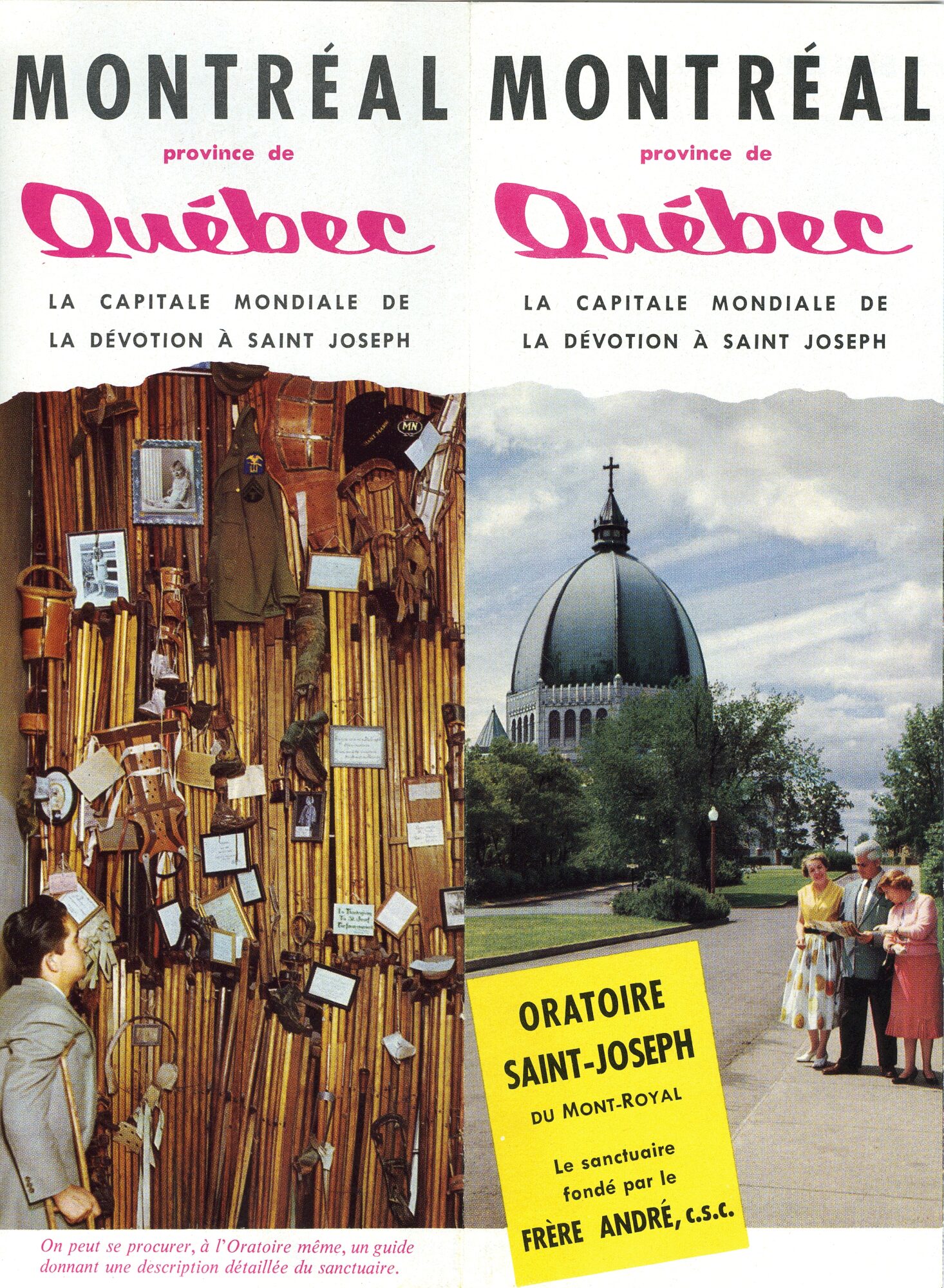
Tourist brochure. OSJ Archives.
A Tradition Still Appreciated
Though they remain relatively discreet in the Oratory’s archives, guides continue to be an important part of the pastoral team. For over 75 years, they have accompanied pilgrims of all ages and backgrounds through the various parts of the Oratory, passionately sharing their knowledge of this great sanctuary—the most significant religious heritage site in the country.
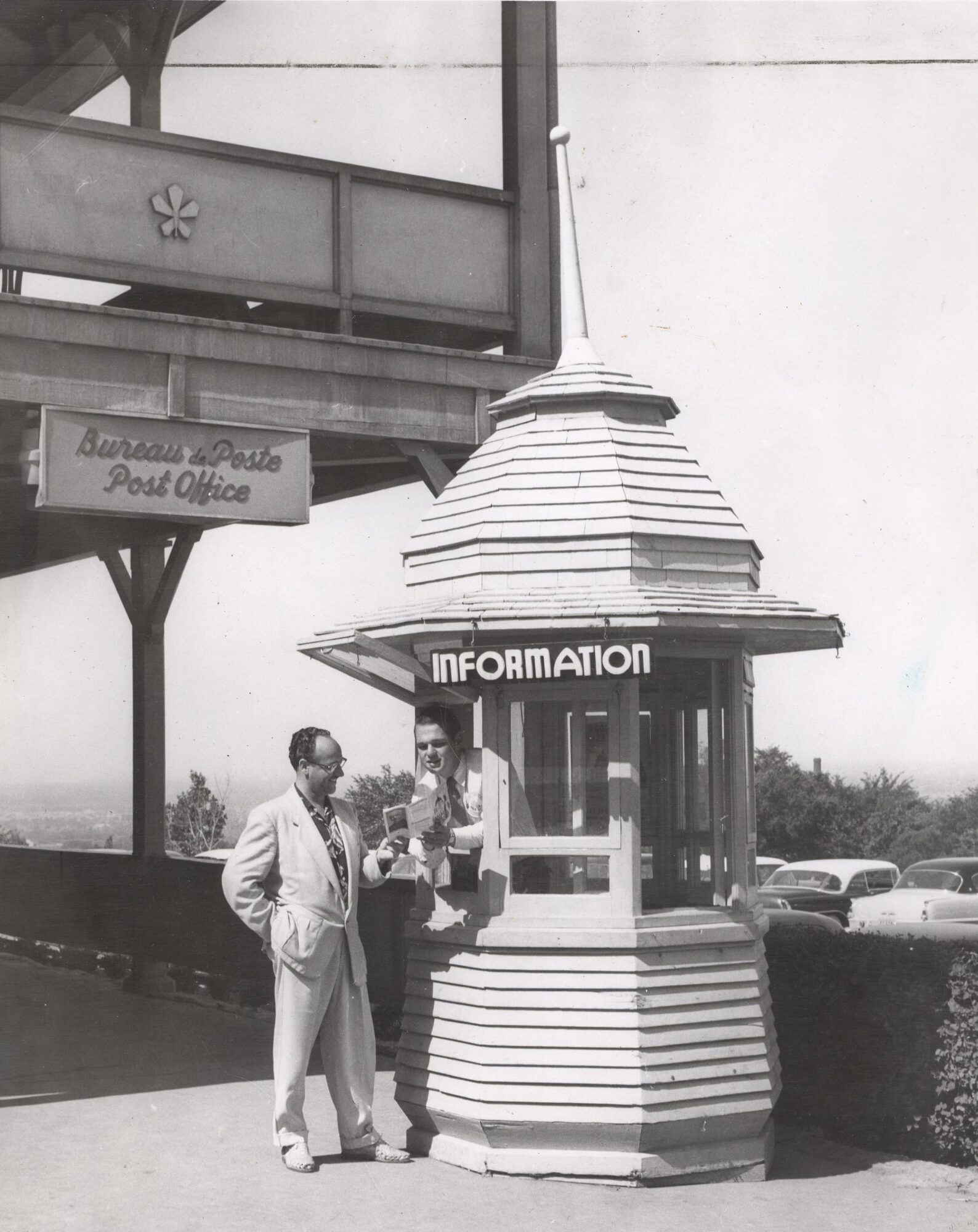
A guide and a pilgrim at the kiosk. In the background on the left, the service pavilion, which housed the gift shop and cafeteria. Around 1950. Photographer unknown. OSJ Archives.
A Call for Your Memories
Were you ever a guide at the Oratory? Do you know someone who was among the first guides of the sanctuary? We would be delighted to hear your story and your memories!
Please contact us at the Oratory Archives at: [email protected]
Sources
- Minutes of the Local Council, September 10, 1946
- Ibid., December 4, 1946
- Ibid., June 20, 1940
- Letter from Pierre Leclaire to Father Honoré Rivest, C.S.C., August 20, 1948. OSJ Archives, 11.01.00_Project 1948
- Ibid., February 6, 1951
- Ibid., May 29, 1951
- Ibid., November 20, 1951

